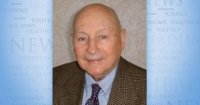 Which country has the world’s worst education system? According to the PISA (Programme for International Student Assessment) tests taken in 2012 by 15-year-olds in 65 countries, the South American country of Peru was at the bottom.
Which country has the world’s worst education system? According to the PISA (Programme for International Student Assessment) tests taken in 2012 by 15-year-olds in 65 countries, the South American country of Peru was at the bottom.
The overall average score for all countries in Math was 494, Reading 496, and Science 501. The top achiever was Shanghai-China with scores for Math 613, Reading 570, and Science 580.
The United States, 36th in rank, scored 481 in Math, 497 in reading, and 497 in Science.
Viet Nam (17th), Slovenia (21st), and Poland (13th) did better than the United States. Peru’s score at the bottom was 368 in Math, 384 in reading, and 373 in Science. Mexico (ranked 53) scored 413 in Math, 424 in Reading, and 415 in Science, which explains why so many Mexican parents want their children to be educated in American schools.
Countries doing worse than Mexico include Uruguay, Costa Rica, Brazil, Argentina, Colombia, and several Muslim countries.
But it is somewhat shocking to learn that Latin America has some of the worst education systems in the world. According to an article in the Christian Science Monitor Weekly, January 12, 2015, Teach for America has been aware of this problem ever since the PISA test scores made these deplorable rankings public. As a result there are now such programs as Teach for Mexico, Teach for Peru, Teach for Chile, and others.
Teach for America was created in 1990 by Wendy Kopp, a Princeton graduate, on the premise that what the public schools in ghetto neighborhoods needed were bright, young dedicated university graduates willing to teach and uplift the children of the poor. According to its Mission Statement:
Teach For America is an American nonprofit organization whose mission is to "eliminate educational inequity by enlisting high-achieving recent college graduates and professionals to teach" for at least two years in low-income communities throughout the United States.
In other words, poor kids are not getting a fair shake in America’s public schools. Yet, back in the 1930s, poor kids in New York City got as good an education as those in the more affluent suburbs. Their teachers were conservative women who knew how to teach the basics. They had not yet been infected with the progressive insanity that took over the schools and began teaching children to read English as if it were Chinese. The decline in literacy among students led Dr. Rudolf Flesch in 1955 to write his famous book, Why Johnny Can’t Read. He wrote: "The teaching of reading — all over the United States, in all the schools, and in all the textbooks—is totally wrong and flies in the face of all logic and common sense."
We don’t know if anyone at Teach for America ever heard of Rudolf Flesch or read his book or any of the other books on the reading problem. That may account for why Deborah Appleman, professor of Educational Studies at Carleton College, would write in the Minneapolis Star-Tribune in 2009, "Implicit in Teach for America's approach is the insidious assumption that anyone who knows a subject and is willing to be with kids can teach — with little training."









